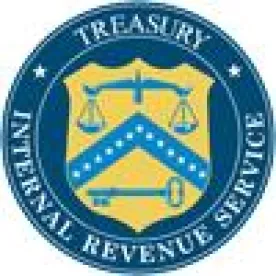The new examples describe additional charitable purposes and PRI terms and structures.
On April 21, the Internal Revenue Service and Treasury Department issued final regulations regarding program-related investments (PRIs). The regulations add nine new examples that illustrate how PRIs can fund a wide range of charitable programs, including by supporting commercial businesses that serve as intermediaries to reach the intended charitable beneficiaries. The examples also demonstrate a variety of PRI investment terms and structures, including equity investments, loans, loans with equity components, and guarantee arrangements.
The final regulations adopt the PRI examples in the regulations proposed on April 19, 2012, with some minor revisions. These examples and the recent revisions are described below.
Charitable Purposes of PRIs
The nine new PRI examples in the final regulations (numbered sequentially after the existing 10 examples) show the various charitable purposes that may be advanced by PRIs:
-
Supporting scientific research in the public interest by funding the research and development of drugs to treat diseases that predominantly affect the poor where the research results will be published (Ex. 11). The preamble to the regulations also notes that research to discover a cure for a disease need not involve a disease predominantly affecting people in developing countries.
-
Combating environmental deterioration by funding a recycling business (Exs. 12 and 13).
-
Providing relief to the poor and distressed by funding a failing business that employs a large number of poor individuals (Ex. 14).
-
Providing relief to the poor and distressed by funding small businesses started by the poor in a developing country (Ex. 15).
-
Educating poor farmers about advanced agricultural methods by funding a commercial enterprise to provide training to the farmers (Ex. 16).
-
Promoting the arts by funding the purchase of space to be used for art exhibitions (Ex. 17).
-
Advancing education by providing funding to a Section 501(k) childcare organization (Exs. 18 and 19).
The permissible charitable purposes are also discussed in the preamble to the final regulations. The preamble notes that supporting the poor by funding their small businesses in a developing country may qualify as a PRI even where the PRI recipients are not facing the additional hardship of a natural disaster as contemplated in the proposed regulations. It also notes that foundations may use a PRI to assume certain risks (e.g., in a deposit agreement or a guarantee) to catalyze the entry or private investment capital to further exempt purposes.
PRI Terms and Structures
The examples in the regulations illustrate the following permissible PRI investment terms and structures:
-
A PRI recipient is required to distribute drugs to the poor at affordable prices and may also sell the drug to other individuals at a market rate (Ex. 11).
-
A PRI recipient is required to promptly (after necessary patent protection) publish the results of research to cure a disease (Ex. 11).
-
An equity investment in a subsidiary of a commercial enterprise where the subsidiary was established to carry on the activities that further charitable purposes (Ex. 11).
-
A potentially high rate of return if the PRI recipient is successful in its business (Ex. 12).
-
An equity investment (or loan with an equity component) in a commercial business whose business activity will support the charitable purposes (Exs. 12 and 13).
-
A foundation holds stock in a PRI recipient even after the PRI recipient’s profitability, or lack thereof, is established (Ex. 13). The preamble to the regulations further notes, however, that a PRI term that provides an ability to exit the PRI that is tied to the foundation’s exempt purpose can indicate that the foundation’s primary purpose of the PRI is to accomplish its exempt purposes.
-
A loan to a distressed business enterprise that will enable it to continue its business operations (Ex. 14).
-
A loan to poor individuals that will enable them to start small businesses (Ex. 15).
-
A loan to a business where the loan proceeds are required to be used for training the poor suppliers of the borrower (Ex. 16).
-
A credit support which may be collateralized (Ex. 18) or subject to a reimbursement agreement (Ex. 19).
General Guiding Principles
The preamble to the regulations proposed in 2012 includes a statement of seven PRI principles, but the final regulations do not include those principles. Instead, the IRS posted the seven principles on its website on the same day that it issued the final regulations.
Those key principles are the following:
-
An activity conducted in a non-US country furthers an exempt purpose if the same activity would further an exempt purpose if conducted in the United States.
-
The exempt purposes served by a PRI may include any charitable purposes and are not limited to situations involving economically disadvantaged individuals and deteriorated urban areas.
-
The recipients of PRIs need not be within a charitable class if they are the instruments for furthering an exempt purpose.
-
A potentially high rate of return does not automatically prevent an investment from qualifying as a PRI.
-
PRIs can be achieved through a variety of investments, including loans to individuals, tax-exempt organizations and for-profit organizations, and equity investments in for-profit organizations.
-
A credit enhancement arrangement may qualify as a PRI.
-
A private foundation’s acceptance of an equity position in conjunction with making a loan does not necessarily prevent the investment from qualifying as a PRI.
Additional principles discussed in the preamble to the final regulations include the following:
-
PRIs often involve some private benefit to one or more persons that are not part of a charitable class. This may even include the PRI recipient itself. But that is permissible so long as the private benefit is incidental to the PRI’s exempt purposes.
-
Foundations may use a PRI to assume certain risks (e.g., in a deposit agreement or a guarantee) to catalyze the entry or private investment capital to further exempt purposes.
PRIs in Partnerships
Equity investments in partnerships raise issues such as attribution of the activities of the partnership to the PRI investor. The final regulations do not include examples of equity investments in partnerships, but instead refer to existing revenue rulings (Rev. Rul. 98-15 and Rev. Rul. 2004-51). The Treasury Department and the IRS state that they are considering whether to issue an additional revenue ruling to address equity PRIs in partnerships.
PRI Background
Internal Revenue Code Section 4944 prohibits investments deemed to jeopardize the carrying out of a private foundation’s exempt purposes. An investment meeting the PRI requirements is not a jeopardizing investment. In general, a PRI must satisfy three requirements to qualify:
-
The primary purpose of the investment must further one or more exempt purposes of the foundation.
-
The production of income or the appreciation of property may not be a significant purpose of the investment.
-
The PRI cannot be used to fund electioneering or lobbying activity.






 />i
/>i

